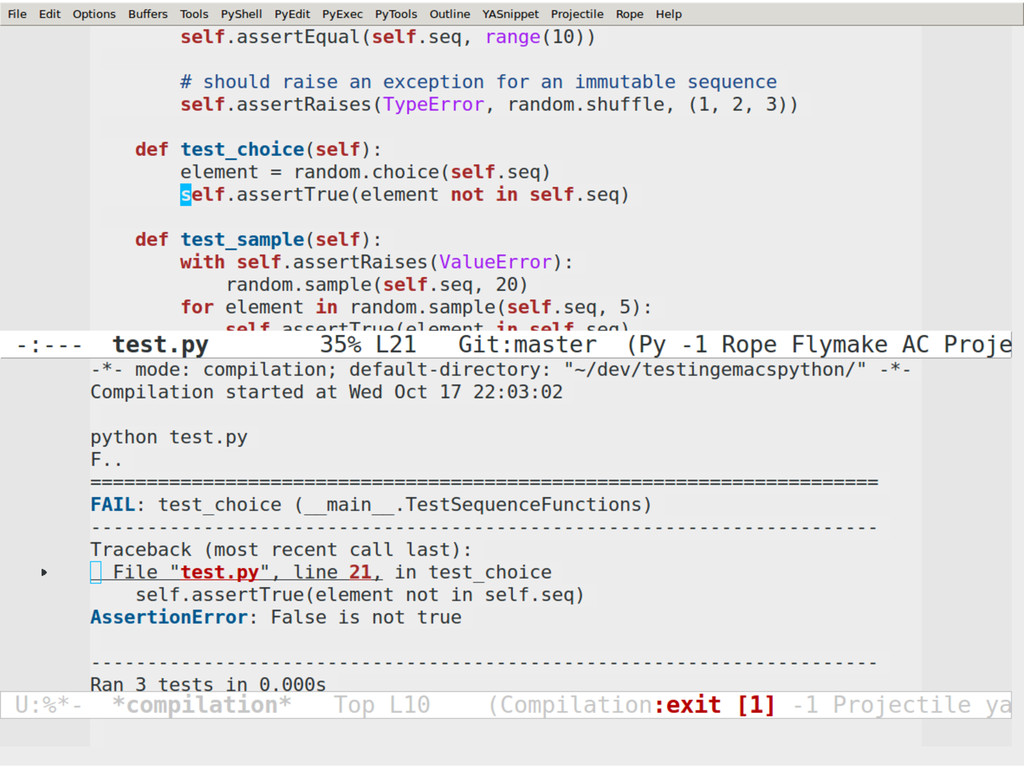

Use c-xpl to load ropemacs.Read more about it here Rope & traad Automatically save project python buffers before refactorings You can now lazily load ropemacs or load it at runtime.For lazy evaluation add this to your. (add-to-list 'load-path (concat base-lisp-path p))) (setq site-lisp-path (concat emacs-config-path "/site-lisp")) (setq base-lisp-path "~/.emacs.d/site-lisp/") Now add path of pyamcs.el to your ~/.emacs file,using this code:
Pymacs rope aquamacs install#
But you shouldn't fear it, as pip uses the same directory, so pip uninstall pymacs will work.Īfter you do the make install of pymacs do not delete the folder.Copy the file pymacs.el to ~/.emacs.d/site-lisp/ People generally frown upon make install, because if you lose the Makefile, it can become hard to cleanly uninstall. sudo make install puts Pymacs module in Python local modules path, usually /usr/local/lib/python2.7/dist-packages/. Īs of February 2014 you can't install Pymacs via pip, therefore: You can follow the instructions as given here ,if you don't want to use marmalade you can use the following instructions. The difference from the solution using pip is that it setups the Emacs side of Pymacs correctly. It installs and build Pymacs, rope and ropemacs. So an easy way is to use an el-get recipe: M-x el-get-install ropemacs. Note: see also emacs-traad below that has an easy installation process.
Pymacs rope aquamacs code#
If you do some search and replace of code objects in your code and find it sometimes tricky, and/or you need to do it in more than one file, then you should consider a good tool of refactoring.īut Rope can do more than this simple example, it can: Rope is a library for refactoring and manipulating Python code, pymacs is an interface between emacs lisp and python, and ropemacs is an Emacs interface to the rope library which uses rope and pymacs. See eglot, a polyglot LSP mode for Emacs (by the author of Yasnippet,…), It builds on top of elpy, and provides even more bindings.Įmacs-bootstrap is a website where you can select a few programming languages, some options, and have it generate a full. The goal of emp is to take all the best development components available for Python, and combine it conveniently under Emacs. change of virtual environment inside Emacs (pyvenv), etc.on the fly code helper with eldoc (and rope or jedi),.code completion with company-mode and either rope or jedi,.jump to a symbol definition (elpy-goto-definition),….run unit tests, run the test the cursor is in, with a test runner of choice (django, pytest, …),.send a region or a buffer to a python interpreter,.There are a number of python modes for Emacs.įgallina's python.el is the python.el included in Emacs 24.2 and onwards.Įmacs-for-python is a bundle of the above modes (and more), and it's an easy way to turn Emacs into a Python IDE.Įlpy is a collection of elisp packages for Python too. 14.6 pungi to integrate jedi, virtualenv and buildout.14.5 helm-pydoc to browse the documentation of installed packages and import one.14.3 Code navigation: move by indentation levels.14.2 Code navigation: jump to function definitions.12.4 include import statements or remove unused.11.5 Send code to the REPL (isend-mode, eval-in-repl).11.4 Send the current paragraph to the REPL, go to the next paragraph.11.3 lpy - eval a region, step through expressions.10.4 Jedi: show the method signature, show documentation.10.3 Eldoc: argument list in the echo area.10.1 Choose your docstring fill-paragraph style (M-q).9.6 Debug Adapter Protocol - dap-mode, LSP for debugging.9.4 Redefine the code being run in the debugger session.9.3 Realgud, a front end to many debuggers to stay in the source window.

8.2 Running Make, with completion of commands.8.1 A Hydra to choose what tests to run, navigate errors and switch to the console.7 Indexing sources: ctags, cscope, pycscope.4.3.3 Red4e - change the method signature, add decorators.4.3.2 Iedit - replace occurences of a symbol.4.2.1 emacs-traad, easy installation and use.


 0 kommentar(er)
0 kommentar(er)
